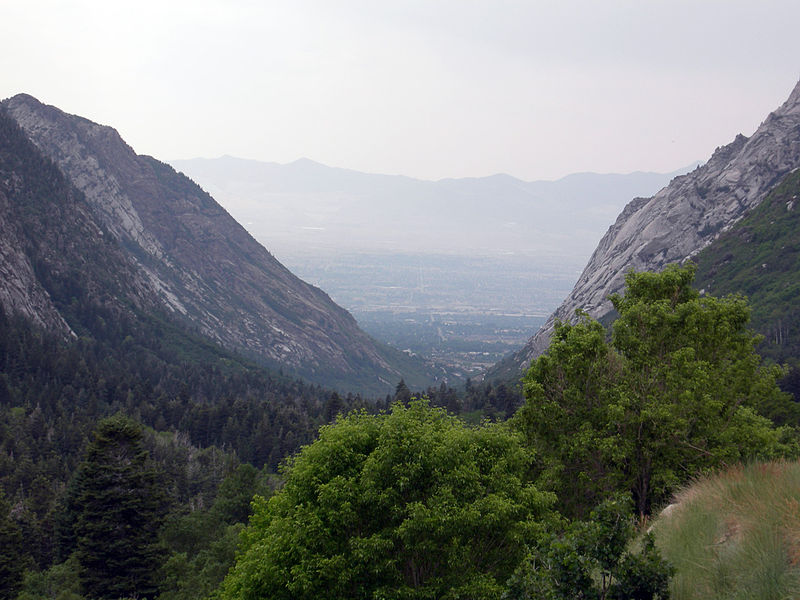Vegetation Panel Activities at ESA’s Annual Meeting 2020
To celebrate the ESA Vegetation Classification Panel’s 25th anniversary, the ESA Vegetation Panel has some great activities planned for this year’s ESA Annual Meeting in Salt Lake City, UT. The meeting runs from August 2nd to 7th at the Salt Palace Convention Center. Vegetation Panel activities include, a field trip and an Organized Oral Session. Possibly more events to come as Annual Meeting draws closer, check back for updates!
![]()
To kick off Annual Meeting, the Vegetation Panel has organized a field trip called ‘The Wasatch Back: Plant Community Ecology, Classification, and Mapping’ to take place all-day on August 2nd. For those of you not familiar with the topography of Utah, the Wasatch range is a segment of the south-central Rocky Mountains. This trip will visit a wide range of vegetation types that characterize the eastern slope of the Watsatch Range on the Uinta-Wasatch-Cache National Forest. Stops will include montane mixed conifer forest, riparian cottonwood forest, aspen forest, mountain big sagebrush shrubland, and ecotones between several of these communities. These sites lie just to the east of Salt Lake City making it the perfect location to explore local vegetation.
The day will begin with a brief introduction to the United States National Vegetation Classification after which the field trip will begin. During the trip, you’ll visit sites where vegetation types will be identified, and successional dynamics and vegetation mapping issues associated with each type will be discussed.
The trip will be led by Ecologists from the Panel and Regional managers. Panel members will provide you with resources to help link what you see in the field with the USNVC and other classification systems. Regional managers will discuss the effects of the area’s past management tactics on the ecology of each vegetation type.
Registration for the field trip is not yet open. Check here for updates!
The field trip is just the kick-off event! ESA’s Vegetation Panel has also planned an Organized Oral Session called: Documenting and Tracking Vegetation in the 21st Century.

In honor of the Vegetation Panel’s 25th anniversary, this session will mark the state of knowledge of vegetation classification and importance of characterizing vegetation communities for research, management, and conservation. With habitat loss the main factor explaining loss of biodiversity, and loss of biodiversity the main factor explaining loss of ecosystem function, it is more important than ever to have a standardized classification across regional, national, and international borders if we are to mitigate the numerous anthropogenic impacts on habitats.
This session will examine the current importance of vegetation classifications and the future of such classifications. Together, American and international scholars will exemplify how the Panel’s work over the past 25 years harmonizes with international efforts that focus on similar initiatives, and the questions that forward a research agenda for vegetation characterization and classification that helps address ecosystem change in the 21st century.
Presenters and talks during this session include:
- Scott Franklin (University of Northern Colorado) , Jozef Šibík & Maria Sibikova (Slovakia Academy of Sciences): Dynamic Vegetation and a Dynamic Classification to Track It
2 Todd Keeler-Wolf (California Department of Fish & Wildlife) & Quyen Nguyen (SERVIR-Mekong): Mapping a Changing World: The Importance of Good Classifications in Modeling Ecosystem Patterns
- Patrick Comer, Don Faber-Langendoen (NatureServe) & Andrew Skowno (South African National Biodiversity Institute): Using Vegetation Classification in Ecosystem Risk Assessment
- Jack Triepke, Carol Spurrier (US Forest Service) & Ke Guo (Chinese Academy of Sciences): Keeping Ecological Practitioners on the Same Page: Conservation Planning and Management Applications of Vegetation Classification
- Dave Roberts (Montana State University) & Susan Wiser (Land Care Research Institute): Digital Age of Vegetation Classification: Providing Big Data and Tools to Meet Big Questions in Vegetation Change
- Esteban Muldavin (University of New Mexico) & John Hunter (University of New England): Classifications as a Research Asset for the Future: the role of Classifications in Lowering Uncertainty in Tracking Ecological Change
Check back for links to session details!

